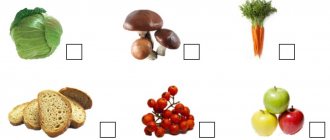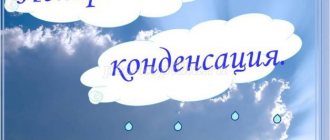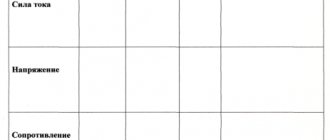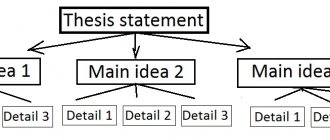Formation of UUD in physics lessons
Physics teacher Dinges N.A.
branch of MAOU secondary school No. 104 Chelyabinsk
Formation of universal educational activities in physics lessons
In modern society, which is developing at an accelerated pace, new state, social and personal needs are being formed.
The realization of these needs becomes possible only in the conditions of changes in the education system and improvement of the educational space.
The new goal of modern Russian education is: “Education, social and pedagogical support for the formation and development of a highly moral, responsible, creative, proactive, competent citizen of Russia” SLIDE 2
The new standards are focused not only on mastering the content, as was before, but to a greater extent on achieving the planned results. The student must achieve these results (as is known, these are personal, meta-subject and subject results) independently, but with our help. That is why the new educational standards are based on a systemic activity approach.
By implementing the formula “From action to thought”, a new learning goal is formulated - the formation of Universal Learning Actions (ULA).
Universal educational activities were developed by a group of psychologists under the leadership of Corresponding Member of the Russian Academy of Education, Professor of Moscow State University A.G. Asmolov. The methodological and theoretical basis of UUD is the system-activity approach of L.V. Vygotsky, A.N. Leontyeva, P.Ya. Galperina, D.B. Elkonina, A.V. Zaporozhets, V.V. Davydova.
Definition: Universal learning activities are generalized actions that open up the possibility of a broad orientation of students, both in various subject areas and in the structure of the learning activity itself, including students’ awareness of its target orientation, value-semantic and operational characteristics. A.G. Asmolov SLIDE 3
In a broad sense, learning ability is the ability to learn:
- Ability to determine goals and objectives independently.
- the ability of students to independently obtain knowledge by working with various sources of information
- applying knowledge outside of school
- readiness for cooperation, self-education, knowledge of the world,
- mastering new social roles and norms of a multicultural society
Thus, the organization of the educational process by a teacher requires the creation of conditions for the harmonious development of the individual and readiness for continuous education and self-education throughout life.
Physics, being a component of the subject area “Naturally - scientific subjects”, forms a system of knowledge about the picture of the surrounding world. Therefore, the main task in these conditions is not the transfer of ready-made knowledge (curricular content). It becomes necessary to include the solution of life problems in the context of teaching the subject.
Acquaintance with the methods of scientific knowledge, formulation of the problem and its independent solution come to the fore.
I will start working according to the program of my educational organization according to 2nd generation standards (FSES) in 2020, but I am already learning to apply their elements in my practice. In particular, I am interested in the formation of universal learning activities. So,
UUDs are classified into
- Personal
- Regulatory
- Cognitive
- Communication
Personal UUD SLIDE 4
- Ability to navigate in a changing world
- Formation of life and professional self-determination
- The ability to highlight the moral nature of behavior, correlate actions with moral standards and ethical principles
- Ability to navigate interpersonal relationships
Perhaps these UUDs can be considered the main ones. I give them a leading role in my lessons.
Based on this, the goals of physics lessons should be focused on the holistic attitude of students towards others, towards themselves and physics as an element of universal human culture.
By instilling respect for the creators of science and technology, we instill in students such qualities as determination in achieving goals and form self-determination in future professional activities.
Implementation is possible within the framework of:
- lesson when we introduce students to the personalities of scientists and the thorny path of their discoveries
- project and creative activities, when students have the opportunity to feel like a researcher, independently obtaining knowledge. (Device and models made by students or their photographs are demonstrated) SLIDE 5
- extracurricular activities: as part of the subject week, the children of grades 9-11 and I organized the conference “A Heart Dedicated to Science.” SLIDE-6
A significant role in the formation of personal UUD is played by students’ familiarity with national regional ethnocultural characteristics (NREC).
These include excursions and solving problems based on NREO. Now I am working in this direction.
An example of a task I created: SLIDE 7
№6. The Chelyabinsk Compressor Plant produces compressors for various purposes. For road work, a KV 5/10 compressor is used; it ensures the operation of three jackhammers and one hammer drill. Using the compressor diagram, determine how the pressure gauge readings change when the pneumatic tool is operating if the drive is turned off?
Regulatory UUD SLIDE 8
They ensure students’ self-organization of their learning activities:
- Setting goals
- Planning
- Forecasting
- Control and comparison with the standard
- Correction of the plan and method of action
- Self-assessment of your activities
- Volitional self-regulation, ability to overcome obstacles
I believe that in physics, I am best able to generate UUD data when performing laboratory work and solving experimental and computational problems.
Example L.R.: Establish the dependence of the period and frequency of oscillations of a mathematical pendulum on its length. SLIDE 9
Progress: Students set a goal for the work , focusing on the topic; select equipment (guiding questions: What are we studying? What do we need for this? Next, we make an assumption (prediction ) that by changing (increasing or decreasing) the length of the pendulum, we can calculate the period and frequency of oscillations each time. By taking measurements and applying the formula, we obtain the period values and frequencies. Analyzing the formula and comparing theoretical conclusions with practical results , they make a final conclusion about the dependence. Evaluate their activities: what worked, what didn’t, what you need to know and do better (correction) in order to achieve more accurate results.
Example problem: Calculate the mass of an aluminum spoon if, when heated in a glass of tea from 25 to 85 degrees Celsius, it received 528 J of heat. SLIDE 10
Solution. Visually: a cup of tea into which a spoon is dipped, or visualize the process. Offer a solution plan (planning) If it is difficult, then guiding questions: What is happening? What can be the mass of a spoon (several grams or kilograms)? (forecasting). How is the amount of heat during heating mathematically related to the mass of a substance? — self-control: do I know the formula? If not, I suggest looking in the textbook, in the notes in the notebook: strong-willed self-regulation and the ability to overcome obstacles. In addition, searching for information in various sources (Cognitive UUD).
Write down a formula that describes the heating process.
Determine known and unknown quantities, express the unknown quantity from the formula. Calculate the value and evaluate its reality (control and comparison) Analyze which stages of solving the problem caused difficulty. What do you need to work on? If the answer is unrealistic, find the error in the solution ( correction .)
Ultimately, we promote the assimilation of the experimental method of understanding physical phenomena and applying it to solve real life situations.
Educational UUD SLIDE-11
They include:
- Search and selection of necessary information using the information retrieval method using reference materials in the office, library and computer tools
- Ability to structure knowledge
- Selecting the most effective ways to solve problems depending on specific conditions
- Actions with sign-symbolic means, formulas
- The ability to competently and consciously construct statements in written and oral speech
- Ability to perform logical actions (analysis, synthesis, comparison, generalization)
- Establishing cause-and-effect relationships
- Carrying out analogies and building a logical chain of reasoning
I believe that this can be done in physics lessons:
- When solving qualitative, computational and experimental problems. Example of a qualitative problem SLIDE 12: Why is a chain that drags along the ground attached to the body of a vehicle transporting flammable mixtures? Answer: During transportation, liquids are agitated and electrified. To avoid sparks and fire, attach a circuit that discharges charges into the ground - Establishing cause-and-effect relationships, building a logical chain of reasoning, Ability to competently and consciously construct statements
- Example of an experimental task SLIDE 13: Calculate the density of a given piece of refined sugar , knowing its mass . Solution steps: Remember the definition of the density of a substance and the formula for determining it. — Actions with sign-symbolic means, formulas
Understand which quantities are known in the problem and which ones need to be found out. How can you find unknown quantities? Students propose a plan : Measure the sides of a piece of sugar, calculate the volume using the formula, substitute it into the density formula for this problem, calculate the density, evaluate the result by comparing it with the table value.
- Preparation of messages on topics. For example, on the topic “Electricity production and transmission in the Chelyabinsk region”
- Working on projects. The project is usually focused on independent activity of students - individual or group for a certain period of time. Solving the problem, the need to search for knowledge from various fields of science, integrating and applying it in real life, in the best possible way, contributes to the formation of both cognitive learning and personal, regulatory and communicative ones.
Communication UUD SLIDE 14
UUD data provides social competence:
- Ability to communicate, taking into account the positions of other people;
- Ability to conduct a dialogue and listen to the interlocutor;
- Participate in a collective discussion of the task.
- Avoid conflict situations or the ability to get out of them correctly.
- Also, communicative educational activities contribute to the formation of the skill of productive cooperation when interacting with classmates and adults.
Such skills are developed through group and collective work in lessons, in research and project activities. Examples include the stages of research lessons, game lessons, conference lessons and laboratory work. Here, students have the opportunity to actively defend their position, present their view of the situation, while simultaneously developing ICT competence when preparing presentations.
Example: A general lesson on the topic “Aggregative states of matter” as part of the Panorama of Pedagogical Excellence. SLIDE 15
SLIDE 16. I believe that extracurricular activities play a special role in the formation of UUD. At extracurricular activities, children are more relaxed and proactive. Children learn to observe phenomena, conduct experiments and explain them.
I would like to have the opportunity to carry out such activities, for example, as part of a propaedeutic course in grades 5-6 or elective courses in grades 7-11. But, unfortunately, I haven’t been able to do this yet, because the school curriculum doesn’t allow it.
In the meantime, extracurricular activities are carried out within the framework of the subject week. For example, an event was held for students in grades 7-8: Oral magazine “Entertaining Physics”
SLIDE 17. To determine what universal learning activities we will form, and at what stage of the lesson, drawing up a technological map indicating the UUD for achieving subject results helps. I developed a sample of such a map using the example of the lesson “Density of Matter”
Literature.
1. Second generation standards “Approximate basic educational program of an educational institution” Basic school. Moscow “Enlightenment”. 2011
2. Asmolov A.G., Burmenskaya G.V., Volodarskaya I.A., Karabanova O.A., Salmina N.G. Molchanov S.V. How to design universal educational activities: from action to thought / Ed. A.G. Asmolova - M., 2008.
3. Project activities in the context of updating educational standards: methodological recommendations / author: E.A. Antonova, I.I. Katsai – Chelyabinsk: MBOU DPO UMC, 2012
4. Implementation of educational and research activities of secondary school students: methodological recommendations / ed. Ilina A.V. Makovetskoy Yu.G. - Chelyabinsk: CHIPPKRO, 2014
5. Shakhmatova V.V. Physics. 7th grade. Diagnostic works for the textbook by A.V. Peryshkina: Bustard, 2015
Formation of universal educational actions in physics lessons. - presentation
Formation of universal educational activities in physics lessons
Reasons for the transition to new educational standards 1. Rapid development of science and technology. 2.High rates of knowledge updating. 3. School ceases to be the only source of knowledge and information. 4. It is necessary to develop the skills to obtain education independently. 5. The current Federal State Educational Standard is the standard of the transition period.
Advantages of the new Federal State Educational Standard The Federal State Educational Standard is formed on the basis of the requirements of the state, family and other consumers; The Federal State Educational Standard is based on an activity approach; Federal State Educational Standards at the profile level provide for the separation of students in classes in accordance with their aptitudes; The Federal State Educational Standard assumes the widespread use of information technologies, electronic resources, and remote technologies.
Universal educational activities A reliable way to improve the quality of education UUDs are a tool for mastering any educational material, close in meaning to the concepts of “general educational activities”, “supra-subject skills”, “general methods of activity”
The main types of UUD personal regulatory cognitive communicative
Requirements for personal results of mastering the basic educational program of basic general education should reflect: 1) the formation of value guidelines based on love for the multinational Fatherland; interest not only in personal success, but also in the development of the democratic and humanistic foundations of society, in the well-being and prosperity of their country. Awareness of one’s identity as a future citizen of the Russian Federation, a family member, a representative of a certain ethnic, regional and religious community, gender group in the context of democratic norms and humanistic ideals of modern society; 2) understanding the need for a conscious choice of an individual educational trajectory in further education and professional activity; 3) comprehension of the historical, moral and cultural experience of previous generations and on this basis the formation of a personal responsible position in the life of modern society, respect for the history, culture, ethnic traditions and way of life of the peoples of the Russian Federation. Requirements for personal results of mastering the main educational program of basic general education Requirements for personal results of mastering the main educational program of basic general education
Education and socialization programs Planned learning outcomes Universal educational activities Fundamental core of content The concept of spiritual and moral education of educational institutions of learning Program for the formation of a healthy lifestyle Basic educational plan Requirements for the results of mastering basic educational programs Requirements for the results of mastering basic educational programs Sample programs
PERSONAL META-SUBJECT SUBJECT Self-determination: the internal position of the student; self-identification; self-respect and self-esteem Formation of meaning: motivation (academic, social); boundaries of one's own knowledge and “ignorance” Moral and ethical orientation: orientation towards fulfilling moral standards; ability to solve moral problems based on decentration; assessment of one’s actions Regulatory: managing one’s activities; control and correction; initiative and independence Communication: speech activity; cooperation skills Cognitive: working with information; working with educational models; use of sign-symbolic means, general solution schemes; performing logical operations of comparison, analysis, generalization, classification, establishing analogies, summing up the concept Fundamentals of a system of scientific knowledge Experience of “subject” activities in obtaining, transforming and applying new knowledge RY LCht IYA Mat OM Muz IZO Tech Phys Subject and meta-subject actions with educational material Planned results: three main groups of results Planned results: three main groups of results
UUD in physics lessons Determination of individual and collective educational tasks; choosing the most rational sequence of actions to complete the learning task; comparison of the results obtained with the educational task; possession of various forms of self-control; assessing your educational activities and establishing their causes; setting goals for self-educational activities. identification of objects of analysis and synthesis and their components; identification of essential features of the object; determining the ratio of object components; conducting different types of comparisons; establishing cause-and-effect relationships; operating with concepts, judgments; classification of information; mastery of evidence components; Formulating the problem and identifying ways to solve it; working with the main components of the textbook; use of reference and additional literature; distinguishing and correct use of different literary styles; selection and grouping of materials on a specific topic; drawing up plans of various types; creating texts of various types; mastery of different forms of text presentation; drawing up tables, diagrams, graphs based on the text; writing abstracts, taking notes; preparation of a review; mastery of quoting and various types of comments; preparation of a report, abstract; use of various types of observation and measurement; qualitative and quantitative description of the object being studied; conducting an experiment; using different types of modeling listening to the opinions of others; mastery of various forms of oral and public speaking; assessing different points of view; mastery of rhetoric techniques; organization of joint activities; mastery of speech culture; leading a discussion; determination of environmental compliance; knowledge of ways to support and strengthen one’s own health; knowledge of methods of self-defense and self-defense.



